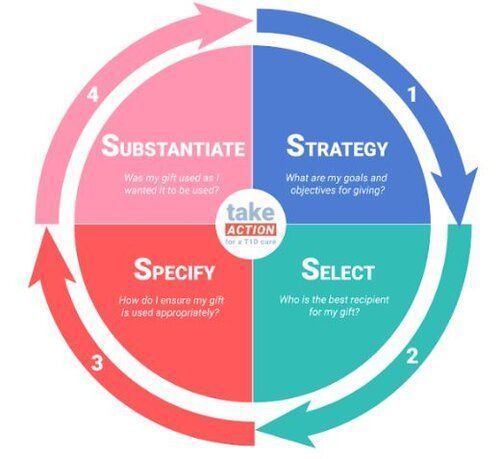
December is giving season; the time of year when donors in the US deliver approximately 1/3 of all their annual charitable gifts. Many of us in the T1D community want to contribute to a project that has the potential to meaningfully change the life of a loved one currently living with the disease: to alleviate the stress of overnight lows, to end finger pricks and carb counting and insulin administration forever.
That hope is why T1D donors entrust more than $450 million every year to the ADA and JDRF. While these organizations do a lot of great work for the T1D community, both have fallen increasingly out-of-step with donor priorities. Survey results show nine out of ten T1D donors want cure research to be the number one priority for all major diabetes charitable organizations. However, cure research spending dropped at JDRF to just 37 cents of every dollar spent (a historic low, and half of what was allocated to research 10 years ago) and the ADA spent just $3.9 million funding T1D-specific research grants in 2018. This report lays out a thoughtful process for giving that acknowledges your – the donor’s – responsibility to make an informed choice and your right to ask for results. The 4S’s of Good Giving strategy helps to increase the impact of any charitable gift and ensure your T1D donation is being used to fund cure research.
The 4S’s of Good Giving
Strategy: What are my goals and objectives for giving?
The approach starts with writing down what it is you want to achieve with your gift. Stating your objective with clarity is the first key to effective giving; all other steps in the approach follow from it.
Be specific. For example, whether you want your donation to be directed at lowering costs for insulin and diabetes supplies or delivering a cure for T1D, your final objective will determine different courses of action for you to take with your gift. Pick one specific strategy and state it clearly.
Select: Given what I want to achieve, who is the best recipient of my gift?
It is often difficult to choose from the many fantastic organizations that would benefit from your donation. A little homework can help determine which organizations are doing the type of work you wish to support.
There are many options within T1D, most of which are excellent choices. These include charities like the ADA and JDRF, medical research centers like the Diabetes Research Institute at the University of Miami or the Naomi Berrie Diabetes Center at Columbia University, or specific research projects in clinical trials (those pursuing a Practical Cure can be found here). List all the organizations that could deliver on your strategy and select the one that works best for you.
Specify: When I make my donation, how do I ensure my gift is used appropriately?
This step is the one most often overlooked, though it is perhaps the most important. Most charitable organizations encourage gifts without restrictions so they can use the money for whatever purpose they choose. However, when giving to a charity, the only way to ensure your money is used the way you want it to be used is to specify.
Write a letter, or use a stipulation card, specifically stating how the donation should be used. For example, you might write: "This donation in the amount of $XXX is to be fully used to fund cure research grants." If the recipient is not willing or able to use the money to fund cure research, they are obligated to return the money.
Substantiate: Was my gift used the way I wanted it to be used?
Every donor, large or small, has the right to ask how a previous donation was used. This information can help you determine whether you want to continue or alter your giving strategy. Asking how your gift was used reminds the recipient they are accountable and dependent upon you, the donor. They should, therefore, be delivering substantial results to you.
A Note On Giving to the ADA and JDRF
Many of our readers have expressed concern about giving to the ADA or JDRF as they have become aware of the low levels of T1D research funding at the ADA and the continued decrease in research funding at JDRF. Some have suggested they will stop giving to T1D causes altogether, which in our view would be an unfortunate and undesirable outcome.
The 4S’s of Good Giving provides donation recommendations which we hope will keep the gifts within the T1D community and ensure an even higher and more direct level of donation impact. The ADA and JDRF, due to their history, scale, and global reach are uniquely positioned to lead a research breakthrough in T1D. If you choose to continue supporting either organization, rather than one of the other T1D recipients, we strongly recommended writing a stipulation letter along with your gift to ensure your donation is used for cure research.
